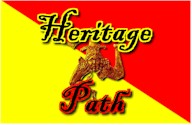 |
|
|
|
|
Ronald Carl Coniglio
and
Marilyn
Fisher
|
|
|
|||
| . | |||||
|
|
||
|
|
|||
| . | |||
|
|
||
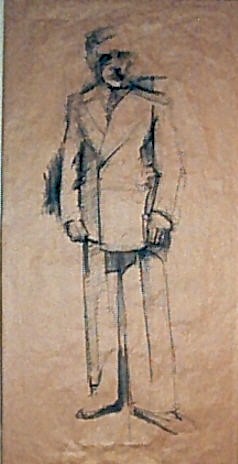 |
|
|
|
|
|||
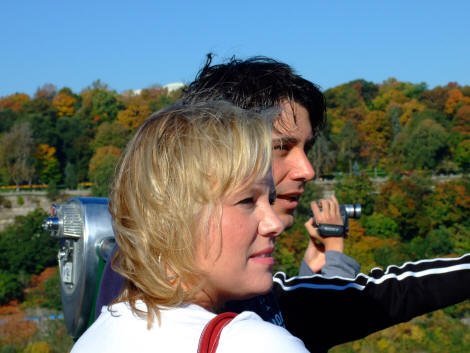 |
|
||
|
|
|||
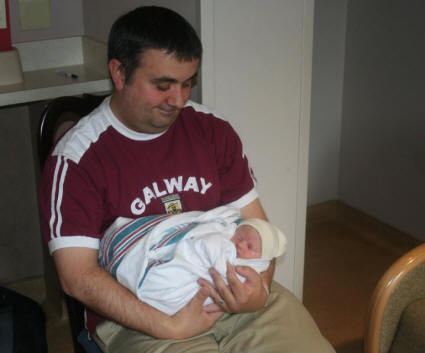 |
|||
|
|
||
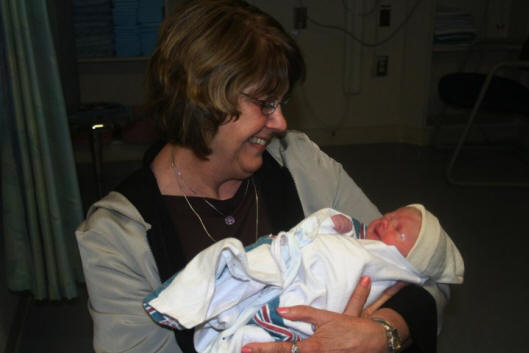 |
|||
|
|
|||
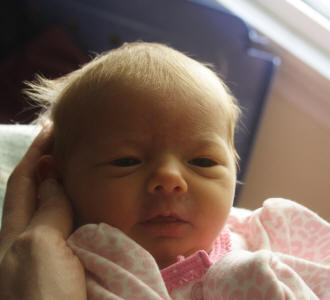 |
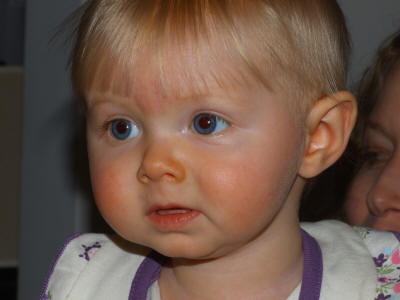 |
||
|
|
|
|||
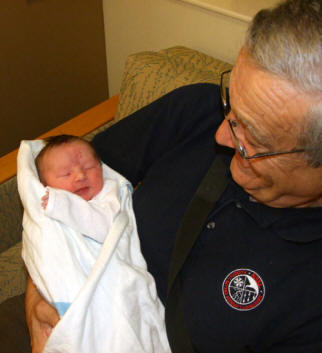 |
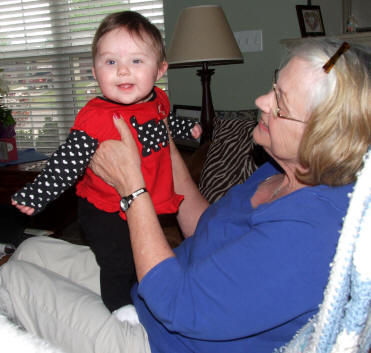 |
||||
|
|
|
|
Between 1942 and 1945, the family* (at the time, my parents Guy and Mary Coniglio, brother Guy, sister Rosemary and I) lived in the Perry Project apartment complex (a.k.a. “the projects”) in Buffalo’s First Ward. Guy was 6, I was 4 and Rosemary about a year old when we moved into the unit at 90 Hayward Street after which we moved to 498A South Park Avenue and then 321 Alabama Street, living at each apartment for about a year. *(My sister Joan was born in 1944, around the time we moved from 498A South Park to the Alabama Street apartment). Hayward
Street… … seeing, out my bedroom window at night, the slowly-winking red beacon on the tower on top of the Larkin Building. … being driven (in an ambulance?) to a place where, as I’m lying on some kind of table, a person standing over me lowers something onto my face. (tracheotomy in response to diphtheria). … when I was sitting at the curb in front of our apartment… and, from across the street (where he was playing near the Blue-Coal Company property), Guy called to me to join him. When I got up and started to cross the street, I hadn’t noticed the (apparently fast-moving) bicyclists approaching from my left. I don’t recall the actual impact* or immediate aftermath but do remember my parents placing me into the bathtub they were filling with hot water. *(collision that broke my left leg). … standing in the living room of our apartment, holding a wooden toy-airplane that was equipped with mirrors (that worked like a periscope in reverse), for aiming the plane’s ( tiny wooden-dowel ) bombs … taking a trip with some neighborhood kids to an area in the complex that was east of our apartment’s location, where my companions and I had come across a building with a basement crawl-space that was accessible from the outside. I recall crawling along the dirt floor of the very shallow, dark space under the building, and turning to look back at where I had entered, noticing the contrasting brightness outside.
My first up-close contact with a real airplane occurred at a public military-exhibit at the Connecticut Street Armory in Buffalo, probably around the time we lived on Hayward. I remember my father lifting me into the cockpit of a Curtis P-40 at the armory, and also the two of us walking through the (dark) interior of the LST cargo-ship that was on display.
498A ( South Park Avenue )… I’ve always associated Morning Glories with my father because, correctly or not, I’ve always believed he planted those that adorned the chain-link fence that ran along the north side of the small lawned-area in front of our apartment at 498A. I can still picture when, one winter night at the complex (as Guy and I helplessly watched from our second-floor bedroom) some neighborhood kids were smashing the snow-fort that we had built earlier that day in the courtyard near the apartment. Responding to the situation, my mother had opened the swing-out windows in our room and, with Guy and I standing beside her, was leaning out, yelling at the kids below… shouting for them to stop. A persistent dream I had when growing up centers on an area of the apartment complex, where, just a few steps south of 498A, a broad walkway runs between the rows of apartment-buildings along the south side of the complex. My dream would begin with me standing at the east end of the walkway looking toward the far west side of the complex, a distance great enough to make recognition of a person standing at that location difficult, even in daylight. It was night-time in my dream and, as I looked toward the far end of the darkened, shadow-filled walkway, I would begin to make out the figure of a man. It would then become apparent that the man was walking toward me. Some apprehension would arise at this point in my dream, prompted by the notion that the man walking toward me might somehow do me harm. The question “What Should I Do?” would then occur. At this point I would notice a large barrel-like container standing in the walkway a short distance ahead of me and I would think … “I’ll run to that container and hide in it”. As the man in the dream continued to slowly come nearer I would run forward and climb into the container… … but, after being inside it for just a few moments, I would begin to wonder if the man had seen me get into it… … and I would then begin to ponder… whether to stay where I was, or climb out of the container and run… (Years later (around 1960) I visited the complex (with friend Pat Hayes) and stood at the place where, in my dream, I had looked down the darkened walkway). South Park Avenue…
(The section of South Park Avenue adjacent to the projects is the setting for the following early-40’s memories). On the south side of South Park Avenue near Louisiana Street was the school that Guy and I attended (P.S. #4). On the west side of the school was a concrete driveway, a broad, open area where kids would gather before the start of the school day. I was in that driveway one morning (1943-44 ?), part of the throng of kids who were milling around, waiting to enter the school. As I have always pictured the scene, I was somewhat removed from the crowd, and nearer to the street than most of the kids were. Guy was somewhere in the crowd but not in view. I didn’t see it happen but somehow learned that Guy, hit by a ball or other object, had his glasses broken. (Immediately upon hearing of the accident I ran home to tell my parents). I recall, on a different day at the school, being in a large, gym-like room and lying down onto a small, multi-colored mat near a wall on the north side of the room. (Likely in “pre-primer”class). I can still picture the shape (a small, soft-edged, cerulean-blue oval) marking the starting page of a chapter in a “Dick and Jane” reader (possibly in Mrs. Sutherland’s second-grade classroom, sometime in 1944). I recall being near PS 4 one day when no one else was around. I was walking behind the school, near tall weeds that stood in front of a chain-link fence. I remember approaching the weeds, and seeing the pods of a milkweed plant. A short distance east of the school (on the same side of South Park) was an A&P grocery store. I remember, one day while walking toward the store entrance with my father and Guy, noticing a small group of people exiting a doorway situated between storefronts (to my left, about fifty feet away). As I looked toward the group of people I heard Guy say… “They’re Gypsies”. The street in front of the A&P, according to an enduring memory, was the site of an accident that I thought had happened around the time we were living at 498A. As the memory goes, (I had heard) that a young boy was run over (I thought by a cement-truck, which at times, I’ve pictured parked at the curb on the north side of South Park across from the A&P). I had always thought that the accident-victim was a school 4 classmate named Joel Goodrich. (In 1991 I contacted Joel - who confirmed he had been run over. He said, however, that the accident he was involved in didn’t occur on South Park or involve a cement truck, but happened on Hayward Street, where, he added, a car had passed completely over him… but without touching him). Near the school and A&P stood the neighborhood’s movie theater… the “Masque”. (I remember my mother’s cousin Tony (Di Benedetto) saying the Masque “smelled like pee and popcorn”). One of the most enduring memories I have involves a scene from one of the early Frankenstein films that Guy and I saw at the Masque. I remember asking Guy (as I watched Frankenstein frantically stumbling through a room engulfed in flames) how the fire would affect the monster. Guy responded, telling me (assuringly) that Frankenstein “will melt … because he’s made of chocolate”. I can still see the poster (on display outside the entrance of the Masque) that advertised the current or upcoming showing of “The Spider Woman”* (1943)… *(one of the Basil Rathbone/Nigel Bruce “Sherlock Holmes”series). … and I remember my mother telling me (at the Masque) that the woman on the pedestal holding a radiantly-sparkling torch (seen at the start of vintage Columbia-Pictures films)… was her.
Alabama
Street… (on a day near the end of the Second World War), being outdoors near the courtyard behind our apartment on Alabama Street (I think it was late morning or early afternoon). There were more people than usual outside their apartments and they all seemed to be talking about and sharing something that was out of the ordinary. As I looked around (from my position near the south edge of the courtyard, I noticed a man standing about fifty feet from me reading a newspaper. On the newspaper front page was a photo of a large, vertically-billowing cloud and the headline “Cloud Rises To 20,000 Feet”. I also recall taking part in a neighborhood event that I think occurred on or about August 14, 1945. It was daytime and I was among a large number of people walking as a group through the courtyard near our apartment*. Many in the group carried metal objects (pots or pans) and were banging on them. I remember having an awareness of the reason for our gathering and doing what we were doing, and distinctly recall feeling connected to a world outside the local one. What I remember most about this event is seeing my father walking toward me (from the southeast… the general direction that the group I was part of was heading in). My father and (apparently) the large number of other people he was walking with (all men I think) had been allowed to leave their jobs early (in recognition of “VJ-Day”). *(Although we were living on Alabama Street at the time, I’ve consistently pictured the courtyard we marched through as being the one near (and east of ) 498A).
|
|
|
||||||||||||||
I didn’t get to see much of either of my grandfathers before they died* and my mother’s mother (Josephine Cordaro Modica) passed away in 1929 (when my mother was 15). My father’s mother (Rosa Alessi Coniglio) lived until 1972. *(Gaetano Coniglio in 1944 and Carmelo Modica 1945). I can recall two occasions of being in the same room with my mother’s father Carmelo including one at the farm in Lackawanna, N.Y. where he raised chickens. I remember being inside a large, barn-like space (watching from a distance) as my grandfather took hold of a chicken by its feet, quickly positioned it on a small wooden table and just as quickly, chopped-off its head. The other time was at our home on Delavan Avenue (he was in the kitchen, in a chair alongside the stove, facing toward the table where my mother was sitting opposite him. I was standing slightly to his left, facing him as he held out his hand, offering me the dime he had just pulled from his pocket). I remember his hand looking rough and his voice being somewhat raspy.
I was at my Aunt Bessie’s house on Cherry Street (44) the day Grandpa Modica died. Bessie Paler* (nee Modica), her sister Mella and Bessie’s kids Jack, Carol and Carl all lived at the house but on that day Aunt Mella and I were the only ones present when a short, stocky man appeared at the front door and, in a rather formal way, announced to me (I had opened the door) that my grandfather had passed away. Afterward, back in the kitchen, I remember Mella saying, “He won’t be driving that truck anymore”. *(Bessie, the older of my mother’s two sisters, was about 3 years senior to my mother and Mella was the youngest of the three). (Just around the corner from Aunt Bessie’s house, on Michigan Avenue, was one of the last blacksmith-shops still operating in Buffalo around the time of Grandpa Modica’s death in 1945. I remember one day watching a horse being shoed, and can still picture the blacksmith, supporting one of the horse’s legs against one of his own, running a knife around the outside edge of the metal shoe he had just nailed into place, trimming-away excess hoof ). I can’t recall ever being directly spoken-to by my father’s father Gaetano and, as with Grandpa Modica, have only a vague memory of what his voice was like. I remember seeing and hearing my grandmother crying… as she lie on the living-room sofa at their home on West Avenue (973) shortly after grandpa Gaetano died.
… It was early evening at grandma’s house on West Avenue. Surrounded by several family members, grandma was standing in the kitchen (generally facing the front (west) end of the house). Aunt Mary, her chair against the wall, was sitting just inside the entrance to the kitchen (from where she could see someone approaching from the front of the house). Also in the kitchen, I was standing opposite Mary, from where I was able to alternately see her, grandma and the open doorway that led to the front of the house. The moment came when Uncle Ray arrived and although not able to see out front, I could hear the commotion as he entered the house. Uncle Ray quickly reached the entrance to the kitchen, just about running through the front rooms, I’d say. Grandma had not moved from her spot in the kitchen, held in place perhaps by the anticipation she must have been feeling. The memory ends as Grandma and Uncle Ray, neither of them saying a word, wrap their arms around each other. (I saw Uncle Ray’s boots make contact with the floor as he entered the
kitchen and noticed that his trousers were neatly tucked
into his boots. If I knew then what I was to later learn, I
might have asked him if he had ever “caught flak” from any
paratroopers for doing that with his pant legs).
Living next door to them were my mother’s aunt MariaAntonia (“Sundo”*) Modica, her daughter Bessie (called “little” Bessie to differentiate from Bessie Paler) and son Jerry (or “little” Jerry to differentiate from my mother’s younger brother Jerry Modica).*(Phonetic interpretation that my siblings and I acquired after hearing the commonly-used derivation/nickname “Z’Anto” spoken). It was at Sundo’s home, on the night of little Bessie’s high school graduation (1945-46 ?), that I first saw and tasted pizza. (“LaBeetsa” is how it sounded when Sundo said it). I can still picture the square-cut pieces (like thick bread, topped with tomatoes) stacked on a plate in their parlor. (Jordan almonds and shelled peanuts were in bowls on an end-table).
Seneca Street runs just south of Myrtle Avenue. In the early 1940’s, whenever the family visited grandma and grandpa’s home on Myrtle, we walked the stretch of Seneca between Spring and Hamburg Streets (from and to the bus stop*… we didn’t own a car yet). *(located, I think, at the northwest corner of Hamburg and Seneca). I remember the walk back to the bus stop (especially after dark and during Fall and Winter) often as being quiet, even tranquil (Our trips to Myrtle Avenue usually occurred on Sundays when, typically back then, fewer people were apt be out and about and auto traffic would be minimal). On the north side of the section of Seneca that led to the bus stop was a very large, bricked factory-building that took up much of the block east of Spring Street. When we walked up Seneca, the factory, as did much of the surrounding area, presented a still, seemingly-deserted appearance, especially at night. The quietness however, would usually be interrupted as we approached the end of the building near the bus stop, where the (somewhat-hidden) activity that took place (on most days) in that part of the factory’s basement would become apparent. (Through partly-opened windows that ran at street-level at that end of the building, you could see people at work and hear the “clackety-clackety” sound of machinery operating down below). (That basement and particularly the sound coming from it, are what I
remember most about the trips to Myrtle Avenue.
Until working
on
this
memoir
I
hadn’t
realized
that,
except
for
having some vague mental-images of the La
Stella Bleach Company (across the street from
309 Myrtle) and the F. N. Burt building
(directly to the south on Seneca street), I have
no recall of the time I was around or in my
grandparents’ home on Myrtle).
The area just east of my grandparents’ home on Myrtle Avenue is the setting for one of my earliest recollections of riding in an automobile. The memory begins with me being alone in the back seat of the car (behind the driver) as it was traveling east on what may have been Seneca Street near Hamburg. I remember going past large, warehouse-like facades, turning (south) onto a bridge, viewing its superstructure out the left window. I have vaguely recalled seeing (only the back of) the driver (identity unknown), and it’s not clear who, if anyone, was in the front. The car is on an eastward heading as the memory fades. (It’s possible my father was a front passenger, the driver a relative or friend and the destination the open-air market (Frontier Terminal?) on the southeast side of Buffalo, where my father would often shop for fruits and vegetables. |
In 1945 the family moved from the projects to the house on Delavan Avenue ( 805 ). The Japanese Lanterns* growing in the backyard and the floral-patterned, stained-glass windows* that were located in parts of the house come to mind whenever I think of those first days at the new house on Delavan * (At the time they were exotic visual-elements of the new-house experience). I clearly recall the evening of the first Christmas-Day on Delavan. Guy and I were in the bedroom we shared and hadn’t yet gone to bed, when, around 9 pm, the door opened slightly and my father appeared. Poking his head into the room, he said… …“It’s
a new
person”,
telling us
of our sister
Carole’s birth
which had taken place earlier that day.
In the same room, about 13 years later, I was at a desk writing when Rosemary came in to tell me “mom is expecting” (the birth of my brother Brian). After Rosemary left, I remember standing at the desk, still holding the pen or pencil I had been using, but not resuming work for what seemed like several minutes. The closet in that room is where I went one day (many years earlier) to examine the “Atomic-Bomb” ring I had just received from the Kellogg company (in return for mailing-in boxtops from their cereal “PEP”). (The ring, as advertised on the “Superman” radio program, had a special compartment, the interior of which (when viewed in a darkened space) would show “real atomic-fission” taking place). During Summers in the 1950’s the family regularly joined Paler and Odden* relatives at weekend picnic-gatherings (at Chestnut Ridge or Emery Park). I remember the day (around 1950) when, after returning from one of those picnics, I had immediately run into the backyard to where the baseball-bat I had been practicing with earlier was lying beneath the big maple tree that stood behind our house. My practice involved swinging the bat in left-handed fashion, a skill that I was eager to learn). Facing toward the back of the yard, I picked up the bat and without hesitating, swung it hard from left to right. I hadn’t been aware that Rosemary had followed me into the backyard and was standing just behind and slightly to the right of me when I swung the bat. The head of the bat made contact with the upper-right side of Rosemary’s forehead. I don’t remember much of what followed other than that Mr. Braungart, our neighbor two-doors down, drove Rosemary and my parents to the hospital. * Mella married Wally Odden in 1948. I remember the morning of their wedding day. On the way to the church, I rode in the car Wally was driving (sitting directly behind him). Other male relatives were also in the car. We had just driven a short way from Wally’s house (on Maple Street, not far from Aunt Bessie’s “fruit-belt” neighborhood) when Wally brought the car to a stop near a small residential intersection, his attention apparently drawn toward a young woman standing across the street from us. Apparently an acquaintance, the woman had recognized the car and was crossing the street toward us. At this point, I vaguely remember Wally expressing a certain hesitancy about stopping to talk with the woman. Upon reaching the car, the woman (resting her arms on the sill of the (opened) driver-side window and extending her head almost into the car), said to Wally (in a light-hearted but maybe not completely joking-manner) “Can I talk you out of this?” (Or words close to that). After a moment, the woman departed and I remember Wally saying to all in the car (also in a light-hearted tone) “Let’s keep this under our hats”. (A female soloist sang “Because” during the wedding ceremony). A different Delavan-backyard accident occurred around the same time as the one involving Rosemary. Guy and I had built a “para-dart” (we bound a long, sharp pin to a dart-sized stick to which we then attached cardboard tail-fins and a small (also home-made) parachute). To test-launch the dart, we went to the most-open section of our backyard (beyond the lawn where the maple tree was) from where I proceeded to throw it high into the air, straight above where we stood. When it looked to me as though the dart might come down where he was standing (opposite me on the east side of the yard), I shouted to Guy..“Run…get out of the way!” Guy ran a distance from where he had been standing and the dart hit him in the back (thankfully not causing significant injury).
Another launching that took place around the same time and in the same area of our backyard where the dart-incident occurred involved a special kite that Guy had constructed. It was typically-shaped (elongated-diamond) but unusually large (at least as tall as we were then), and much more sturdily-built than the average kite (he used heavy brown wrapping-paper and twine and thicker-than-normal wood for the frame). I remember afterward excitedly telling friends and neighbors that Guy’s “super-kite” had flown all the way to Fillmore Avenue (a couple of miles to the west). The Fillmore Avenue claim was a bit of an exaggeration but the flight was nevertheless a successful one, the kite reaching very high altitude and traveling farther (beyond Carl St. toward Grider) than any kite we had previously flown. There are certain sounds that I associate with the time we lived on Delavan, notable among them those coming from railroad yards (located a few miles south of our house). To me, the distant sounds (the slamming and clattering of railcars being repositioned, chugging and whooshing of the steam-locomotives and deep rumble of the electric engines) were among the more interesting and intriguing components of the daily-mix of sounds I heard through my bedroom window, especially at night. One of the most unforgettable sounds from the days on Delavan was made by an airplane that flew over our house one day (around 1955, give or take a couple of years). I was standing under the maple tree when I first heard the plane approaching from the north. It wasn’t a sound I was familiar with. Twin-engined (Douglas DC-3, Convair 240, Martin 202) and four-engined (DC-4, DC-6) passenger-liners as well as P-47 and P-51 fighters and AT-6 trainers regularly traversed the sky above our neighborhood and I knew them all well enough to recognize them by their sound alone. The plane coming over the house was a Convair B-36 “Peacemaker”, the world’s biggest and heaviest airplane then in operation. Possibly having just taken off from the Niagara Falls Air National Guard base, it was very low, not much more than tree-top level when it arrived directly above me (momentarily obscured by the maple tree). As it emerged* into unobstructed view over the backyard (on a due-south course), its engines emitted a deep growl that was unlike any airplane sound I had ever heard. *(In terms of visual-impact based on its sheer size, I would compare the sight of the emerging B-36 to the scene in “Close Encounters of the Third Kind” when, seen from below, the mothership first comes into view over the rim of Devil’s Tower). (On a different note), my mother often sang at home but, unlike the lullabies she had regularly sung to us in very-early years, her singing on Delavan was more spontaneous and was usually composed of just fragments of melody lasting only a moment or two. One day (sometime around 1950) she was singing one of those brief melodies (in an upstairs part of the house). I was downstairs near the front foyer (talking with Guy’s friend Larry Albertson, who had stopped by). I remember, when he heard my mother singing, Larry turning to me and saying, “She has a beautiful voice”.
|
Upon moving to the Delavan neighborhood, PS23 became the elementary school that eventually all my siblings and I attended. Located on Delavan (at Moselle), “23” was a short 2-1/2 blocks east of our house. My teachers included Mrs. Carmody (3rd), Mrs. Wyck (4th), Mrs. Pfaffenbach (4th), Mrs. Needham (5th), Mrs. Frost (5th-6th), Mrs. Carter (7th-8th) and Mrs. Peed (8th). Special-subject teachers included Mrs. Kelsey (Art), Mrs. Randazzo and Mr. Wagner (Instrumental Music), Miss Graziano (Vocal Music) and Mr. Baumann (“gym”). Mr. (Howard S.) Van Hoff was the principal. (About 40 years after I had last been a pupil at 23 I ran into Mr. Van Hoff - at a Bell’s Supermarket in Williamsville-and I recall on that occasion, that he was as astute and gentlemanly as I remembered him to be at school 23. As far as his remembering who I was… when he addressed me that day at Bell’s he called me “Ronnie” ). One of my earliest school 23 memories is of being in Mrs. Carmody’s classroom* with my friend and classmate Sam Lombard. Mrs. Carmody was the only other person in the room as Sam and I covered the big blackboard at the front of the room with colored-chalk (Spring-themed) drawings. *(Mrs. Carmody’s room, as were the art and music rooms, was located in the older, original section of the school building. I can still see
(and remember the creaking of) the wooden floors of the
rooms and hallways in the old section ).
I can still visualize Miss Graziano energetically walking up the aisle to the right of my desk toward the front of the classroom (her youthful attractiveness eliciting a “hubba-hubba!” or two from some of the boys in the class). I can still picture the colored-pencil portrait* I made in art class and recall Mrs. Kelsey commenting about the drawing.* (of an American-Indian chief ) I can still hear the subtle “hmpph” sound Mrs. Needham (seated next to me) made in reaction to the scene that had just appeared on screen during a movie being shown to classes in the auditorium. (On another occasion in that auditorium I remember seeing the John Ford film “Drums Along The Mohawk” (1939)). I recall (one day in 1951) the concerned look on Mrs. Carter’s face and her comments regarding President Truman’s dismissal of General MacArthur the previous day. (Although she was standing in front of the class when she made them, I sensed that her comments were directed mostly to herself.) I haven’t forgotten seeing and hearing, one winter day in Mrs.Carter’s room, classmate Robert Getzin excitedly exclaim (from near his seat in the row by the windows on the west side of the room)… “It’s a fly!” (He had seen a housefly and was amazed by its appearance at a time of year when flies weren’t normally seen).
*(Although I have no recollection regarding any of the text surrounding it, the photo may have pertained to the noted “Flight 19” disappearance which took place on December 5, 1945). I remember
the skit,
performed
on the auditorium stage,
that was part of a production intended to instruct
pupils about proper behavior in a variety of everyday
school-situations. The skit showed a pupil (portrayed by
classmate Carl Spiedel), in a school-library
setting,
eating a
cookie
while reading
a library-book (the lesson being that you shouldn’t
eat while reading a library-book).
I remember
sitting in
a 23 classroom
near the
“cloakroom”- the closets along the back of the room where kids kept coats,
hats and boots), watching and listening as some kids
excitedly talked
about the
movie “The
Treasure of
the Sierra Madre”(1948),
which they had apparently recently seen (they were
particularly
commenting on
the scenes
involving
the gila monster
and bandits). Thinking about Tech High School days usually brings to mind… … the sharp acid-smell in the chemistry room I visited on open -house night at the school (probably 1951). … the aroma coming from the brewery (Simon Pure, I recently determined) near the Jefferson-Clinton bus stop (last leg of the regular 3-bus journey to and from the school when it was located on Clinton Street). … the smell of the tuna-fish sandwiches I often brought for lunch. … the day I was able to watch, from a classroom window, the group of P-47’s engaging in simulated-combat maneuvers over the nearby Buffalo harbor front. |
|
The Buffalo Bisons (The city’s “Triple A” International-League team) played at Offermann Stadium on East Ferry Street on Buffalo’s east side. (Admission to the bleachers was around 50 cents). I recall, one summer evening (seated in the left-field bleachers with Guy), watching the ball hit by Bisons’ shortstop Billy DeMars soaring toward us and making a “thunk” sound as it hit near the top of the left-field wall… and, on another night in the same bleachers, seeing the game-winning, line-drive single struck by Buffalo’s Coker Triplett going past the opposing shortstop into left field… and in a different night-game, viewing, from the first-base side of the stadium, the home run hit by Bisons’ centerfielder Wally Post going, in a high, curving arc over the left-centerfield wall. In the mid-1950’s I played on St. Bartholomew’s CYC softball team (in a league for high school-aged players from east-side Buffalo Catholic parishes). Tommy Hanes was “St. Bart’s” pitcher and I was catcher.) Blessed Trinity (church and school located on Leroy Avenue, a short way north of St. Barts which was on Grider), was one of the teams we regularly faced. The “BT” team had an exceptionally gifted and effective pitcher named Fred (“Fritz”) Ehlers. During a practice-session one evening at Dewey Playground (near BT Church), I saw Ehlers (using his normal underhand delivery) pitch a ball over home-plate from short centerfield. It was difficult for most batters facing Ehlers back then to see his pitches let alone make contact with them (his pitches were that fast), and it was unusual for him to allow a hit or a walk in a game. I can still picture (during a league-game one summer evening at Masten Park), my teammate Billy Kolz hitting the weak bloop-single just beyond the infield, that spoiled an otherwise perfect game by Ehlers. I remember feeling good about making solid contact with one of Ehler’s fast pitches in that game (even though the ball ended up going straight into the BT centerfielder’s glove). A different game at Masten (against St. Mary of Sorrows) stands out because of a particular play involving the St. Mary pitcher and me and the subsequent compliment* he paid me regarding that play. With St. Bart’s ahead 2-1 in a tightly-played game, St. Mary was coming to bat (around the middle of the game). The St. Mary pitcher (whom I remember was a good all-around player and motivator on his team) was leading off the inning. I don’t recall if we had anticipated his move, but the St. Mary pitcher, in an attempt to catch us off-guard and hopefully start a rally, laid down a bunt. Rolling between our pitcher and third base, the bunt looked like it would become the hit he was trying for. I scrambled to the ball, scooped it up and threw to first… (I can still picture my throw, the ball passing close to the left side of the St. Mary pitcher’s head as he raced toward first base). The throw beat him and St. Bart’s went on to win the game by the 2-1 score (St. Mary ultimately won the league championship that season). *(After the game the St. Mary pitcher came over to me and said… “you’re good”). Major-league baseball games I attended in the 1950’s included one at the Polo Grounds (in NYC, 1957) in which Willie Mays played and a Yankees-Indians doubleheader (in Cleveland on September 12, 1954) that my father, Guy and I traveled by train to see (Bob Lemon and Early Wynn were the Cleveland pitchers that day, with Whitey Ford and Tommy Byrne starting for New York). (Mickey Mantle, Yogi Berra, Phil Rizzuto, Billy Martin, Enos Slaughter, Allie Reynolds, Larry Doby, Al Rosen, Vic Wertz and Dale Mitchell were among those playing that day). I remember thinking, during the games, how strange all fly balls (including home runs, like the one Berra hit that day) looked compared to those we saw when at Offermann Stadium (the bird’s-eye perspective, afforded by our very-high seat location in the Cleveland Stadium, gave a different appearance to the arc of any fly-ball). I can still picture the virtual-sea of people exiting the stadium as we walked back to the train after the game ( official attendance was 86,563, a major-league record at the time ). On the ride back to Buffalo there was a guy in our train car who, apparently drunk, was yelling (at the top of his lungs, with a Polish accent) “YAAAAAAY YANKEES!!… BOOOOOO CLEVELAND!!”… all the way back to Buffalo (Cleveland had won both games, in the process squelching Yankees’ hopes of repeating as league champions). Around the same time but closer to home (at Seneca High School* on Delavan Avenue), I saw Seneca’s Bob Adams hit a home run in a league game at the field behind the school. I can still picture Adams’ home run (a very sharply-hit ball that quickly went in a low, twisting arc, over the chain-link fence in left field, just inside the foul-line). (I didn’t know Bob Adams and don’t recall how I came to know his name, but years later, when teaching in Williamsville, I learned from a fellow-teacher who did know Adams that he (Adams) had joined the army after completing school and ultimately attained the rank of general). * (My brother-in-law Don Fisher went to Seneca in the early 40’s. Although he was interested in football and qualified for Seneca’s varsity, he never played for the school’s team because his mother didn’t give the required permission. She called football “Murder-game!”). Seneca field is where many Delavan/Grider-area kids of high-school age regularly went to play baseball (“for fun” as opposed to league-play). “Otis field” (what we called the grassy plot south of the Otis Elevator factory on Grider at Northland Avenue) was another place where kids regularly gathered to play baseball (Rob Gerlach, 23-classmate Richie Ruth and his cousin Richie Kreuger come to mind when I think about playing at Otis). Although baseball was the sport that I (and most kids I knew) spent the most time following and/or playing during the 40’s and 50’s, in the Fall I (and other boys* in my immediate neighborhood) enjoyed playing (touch) football (in Carl Street, near the Delavan end of the street). *(Billy Kolz, Rob Gerlach, Donnie Everett, Jackie Herman, Ron Beaver, all of whom lived on Carl Street.) Schoolmates/friends Franny Bruno, MaryAnn Catalano, Bob Meisling, Carol and Patricia Neil, Kay, Bob and Jimmy Sittnick… … relatives Ange and Angie Coniglio (and Ange Jr.), Chuck and Rose Modica (kids JoAnne, Chuck Jr. and Patty), Mr.& Mrs.Michienzi (kids Fran, Dolores and Tommy)… … and relatives-to-be Augusta and Charlie Fisher (kids Don, Shirley and Marilyn) all lived on Carl Street (and all on the block between Delavan and Northland). (High-school league football games were played for the most part at All-High Stadium (located behind Bennett HS). I still remember, seated in the stands at “All-High” one sunny, Saturday morning, watching Kensington High’s star running-back Tommy Webb running to his left, trying to “turn the corner”).
|
Paul Schmidt’s brother George phoned one day in 1952… he had 2 tickets to a college-basketball doubleheader (to be played at Buffalo’s Memorial Auditorium) and asked… “would I like to go?” (Games at the “aud” back then were big events, particularly when local-team Canisius (the “Golden-Griffins”) played regional-rival Niagara (“Purple Eagles”) or St.Bonaventure (“Brown Indians”). (The three schools were referred-to as the “Little-Three” in area-sports circles, but there was nothing little about the enthusiasm the games generated in the region, the Saturday-night games regularly being played before sold-out aud crowds). I remember, when entering the arena for the first* time, noticing Niagara guard Larry Costello**, on the court warming up with the rest of the team (which at the time included Bo Erias, Ed Fleming and Charlie Hoxie). *(Aunt Connie had taken me there to see Ringling Brothers Circus when I was 4 or 5, but the doubleheader was the first major indoor sporting-event I had ever attended). **(Costello had a very distinctive shooting style, using two hands for his exclusively long-range (“set”) shots and (characteristically) squaring his body and planting his feet before launching them). Stand-out memories from Little-Three games I attended in the mid-1950’s include…seeing Niagara guard Hubie Brown flipping a behind-the-back pass to a teammate as they both raced down court on a fast-break (the crowd really did roar)…and watching, on a different night, Holy Cross star-forward Tommy Heinsohn throw in one-hand shots from the far corners of the baseline (against Niagara, in a game punctuated near the end by a bench-clearing brawl). (I remember feeling a bit dismayed at seeing the players fighting. I had never seen a real-life fight, in a game or anywhere else, and at that point had yet to see a professional hockey game). Years later, when teaching in North Tonawanda, I learned that a fellow faculty-member (Bob Ivory) was at the aud the night of the brawl and had “participated” in it. (At aud basketball games, rows of folding, wooden chairs, reserved for media and others having connection to the teams or event, were set up at both ends of the court at floor-level just a few feet from the surface of play). Ivory, a coach at “N.T.”, and regular attendee of Little-Three games, was in one of the court-end chairs on the night the Niagara-Holy Cross fight broke out. Heinsohn reportedly was involved in the thick of the melee and, as the story goes, had at one point been knocked to the floor. I recall Ivory saying to me “I decked him”. At another aud game, this one involving Canisius and Syracuse (probably around 1955 or 1956), I remember watching a Syracuse player running up the court and noticing in particular, his calf-muscles, which were well-developed. I remember thinking he somehow didn’t fit my expectation of how a basketball player was supposed to look. The player whose leg muscles caught my attention was future NFL running-back Jim Brown. One day (sometime around 1965), I saw Niagara’s (renowned) coach John “Taps” Gallagher up-close at Williamsville High School. I was sitting in the faculty room when Gallagher entered and was greeted by teaching-staff members whom he apparently knew. When one teacher asked Gallagher what his strategy would be for dealing with a certain star-player that Niagara would be going up-against in a game that weekend at St. Bonaventure, he responded, “Take the air out of the (expletive) ball”. |
The door we most often used to enter or leave our house on Delavan was the one on the west side of the house, where the driveway was situated. Just inside that entrance was a very small (no bigger than 2-1/2’ by 5’) step-in area. This vestibule, at the bottom of the 3 or 4 steps that went up to the landing (also very small) that led to the right (kitchen) and left (front foyer), is the setting for three enduring memories. In the first one, (from 1959), I was at the top of the vestibule steps, looking down at my father who was about to exit (on his way to visit Frank Denisco (Aunt Mary’s first husband),who had recently been hospitalized). When I asked him if he knew how Uncle Frank was doing, my father replied “He’s finished” (saying Frank was not going to recover). (Frank worked as a truck driver. I know this because one day, when I was about 11 or 12, he let me “drive” his truck.
It was a sunny, summer day at Grandma’s house on West
Avenue and
the big
(dump)
truck that
Frank
drove was
parked
on
the street out front.
I don’t recall how it all came about but I remember
riding in the truck and after a while Uncle Frank
asking me if I’d like to drive (I remember taking
hold of the steering wheel for a moment or two). The second vestibule memory is from May 13, 1960. I was at the top of the steps and my father, who had just entered, was looking up toward me. We had both learned that actor Gary Cooper had died that day and were feeling a bit dejected about his passing (we both admired Cooper). I recall saying to my father (trying to offer some consolation) “He (Cooper) was 60 years old”.
(I had seen her once before, in a glimpse from an upstairs window… she was in a car stopped on Delavan at the end of our driveway, leaning from the driver’s side toward the opened passenger-side window, talking to Carole who was on the front porch). On the day we met, I was standing at the top of the vestibule steps looking at her, and she, having just entered, was standing at the bottom of the steps, looking up at me. Smiling, she said (something like) “Is Carole home?”
|
|
|||
|
|
Below is an article about
Ron's art in the |
|
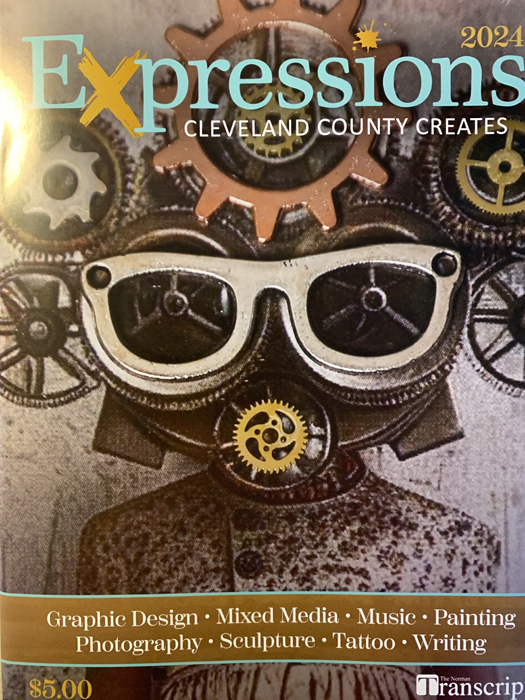 |
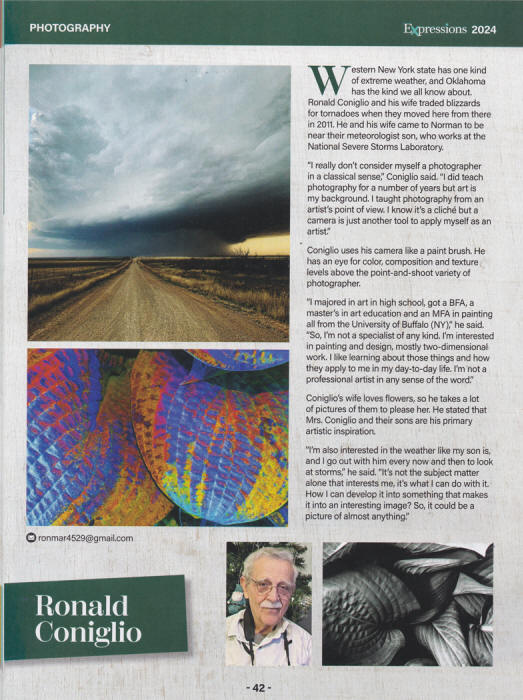 |